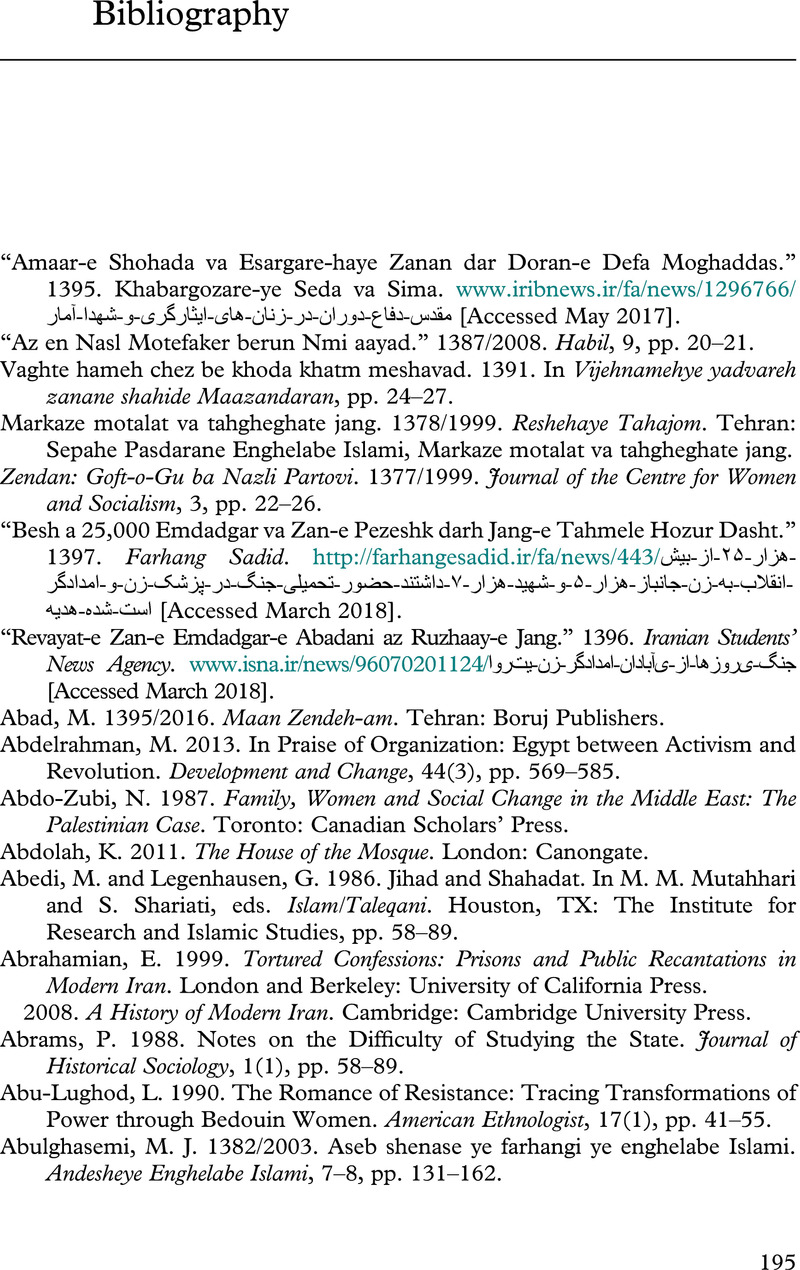Book contents
- Women and the Islamic Republic
- Cambridge Middle East Studies
- Women and the Islamic Republic
- Copyright page
- Dedication
- Epigraph
- Contents
- Acknowledgments
- 1 State Formation and Citizenship
- 2 Reflecting on an Idealized Past
- 3 Revolutionary Citizens
- 4 The Body in Isolation
- 5 The Aftermath of War
- 6 Iran’s Hezbollah and Citizenship Politics
- 7 Conclusion
- Bibliography
- Index
- Series page
- References
Bibliography
Published online by Cambridge University Press: 13 January 2022
- Women and the Islamic Republic
- Cambridge Middle East Studies
- Women and the Islamic Republic
- Copyright page
- Dedication
- Epigraph
- Contents
- Acknowledgments
- 1 State Formation and Citizenship
- 2 Reflecting on an Idealized Past
- 3 Revolutionary Citizens
- 4 The Body in Isolation
- 5 The Aftermath of War
- 6 Iran’s Hezbollah and Citizenship Politics
- 7 Conclusion
- Bibliography
- Index
- Series page
- References
Summary

- Type
- Chapter
- Information
- Women and the Islamic RepublicHow Gendered Citizenship Conditions the Iranian State, pp. 195 - 215Publisher: Cambridge University PressPrint publication year: 2022



